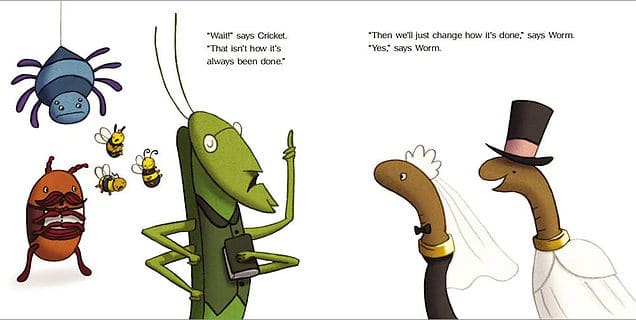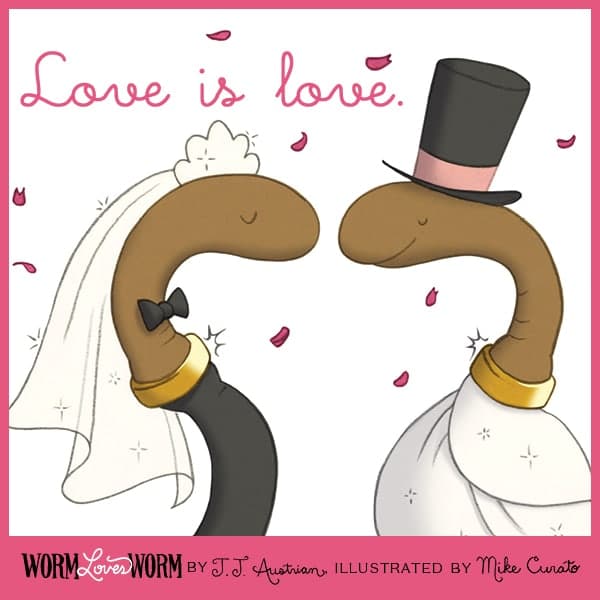
“You’re going to write a picture book.”
Not since sixth grade, when my mother said to me, “I’ve signed you up for ballroom dancing,” have seven words so terrified me.
When I decided to apply to Hamline University’s Master of the Fine Arts Program in Creative Writing for Children and Young Adults, my focus was firmly on the Young Adult part. I had been writing spec screenplays for years, without any sales, and the idea of writing Young Adult stories with fast-moving plots and complex character arcs had been brewing in the back of my mind.
Even before my kids were old enough to read, I was a huge fan of Harry Potter, Percy Jackson, and The Hunger Games. Growing up, I had read books like John Christopher’s Tripod series and David Edding’s Belgariad series over and over.
After I was accepted into Hamline’s MFA program, I decided to spend my first two semesters working on Young Adult and Middle Grade novels. Naturally, it was during my third semester, when I had to write my huge-ass critical thesis, that my advisor, the amazing author Claire Rudolph Murphy, decided I should also write a picture book.
Claire said she wanted to “challenge me,” but I honestly think she wanted to torture me after finding out I had once worked in television.
I did not want to write a picture book.
No. Really. They are hard to write. Really hard.
Did you know, that because picture books are printed on eight pages and then folded, that they have to be exactly thirty-two pages? Otherwise they require a special print run which will cost extra money. You also can’t tell the illustrator what to draw or how things should look. All you’re supposed to do is provide the text without commentary or description. And, ideally, your story should be between three hundred and five hundred words. A thousand at most.
A thousand words? I have text messages longer than that!
So there I was, sitting at home, staring at my computer screen, and trying not to panic. Sure, I had an idea about two worms that get married and freak out their insect friends, who can’t tell the bride from the groom, but it wasn’t a story.
So, I turned to the one thing that I knew could help me make it a story:
Save the Cat!
The Beat Sheet would save me. I already knew my opening, which also meant I knew my ending.
Opening Image: Worm loves Worm.
Final Image: Worm loves Worm.
Now for the all-important Midpoint. Well, since I wanted the story to end happily, I knew I should make my Midpoint a “down” beat, just like Blake suggests in his books.
Midpoint: They can’t be married because they don’t have rings!
And, from there, the story fell into place. I had the outline for my picture book.
No, I didn’t write the story in one draft. Like any good story, I had to revise Worm Loves Worm many times before it was ready. I added more Fun and Games, upped the conflict, brought in an ally, refined the ending, and changed specific words, but the spine was there. The overall arc and story never changed, thanks to STC!
In fact, because of the beat sheet, and all the wonderful notes and useful advice I received from faculty and fellow students at Hamline, when I did sell my picture book to Balzer+Bray at HarperCollins, my fantastic editor, Alessandra Balzer, only wanted to take one word out. That was it. No heavy revisions or rewrites. (The word, if you’re curious, was “wink,” which became unnecessary because of Mike Curato’s brilliant illustrations.)
So, no matter if you’re writing a screenplay, a novel, or a picture book, trust in the beat sheet and make sure the spine of your story is strong. Because, in the end, we’re all after the same thing: telling the best stories we can.
Oh, and I’m happy to report that when my advisor asked me what I wanted to work on after Worm Loves Worm, I found seven words to terrify her:
“A four book epic YA fantasy series.”
Check out Worm Loves Worm on Amazon — and J.J. Austrian’s website.
John Austrian
10 Comments
Leave a Reply Cancel reply
You must be logged in to post a comment.












Thanks for a behind the scenes look of how this project developed! It was really insightful how you developed from opening-closing images and the midpoint.
And congratulations for your published book.
Thank you, Phillip!
Great blog post, J.J.!
The premise is indeed looks promised. It’s always fascinating to see how STC! helps us all writers with the same helpful techniques and methods. It makes writing much more fun and satisfying.
Just a quick word on the Midpoint – I might be wrong, but the Midpoint doesn’t necessary has to be the opposite of the final image. I know it’s more common and I did wrote a few features with a Midpoint that works as the exact opposite, but it doesn’t always like that.
Die Hard has a victorious Midpoint and many sport stories has one as well (our hero wins his first fight of the tournament, the team celebrates their first victory, etc.). I know it’s a false victory, but they are both on the (+) side of the beat.
Can’t wait to see your posts on your four book epic YA fantasy series!
Thanks, Ori, and, you’re right, the Midpoint doesn’t have to be opposite of end. I just seems to work for me.
John, you the man! I hope this is only the prelude to many other projects. Keep it coming baby! Proud of you.
Thanks, George!
Bravo J.J. Looks like an instant classic.
Thank you, Tom!
Congratulations, John! It looks like such a cute, sweet book. I can’t wait to check it out!
Thank you, Rachel! Hope your writing is going well. When will we get to see “Santa Baby?” ;-)